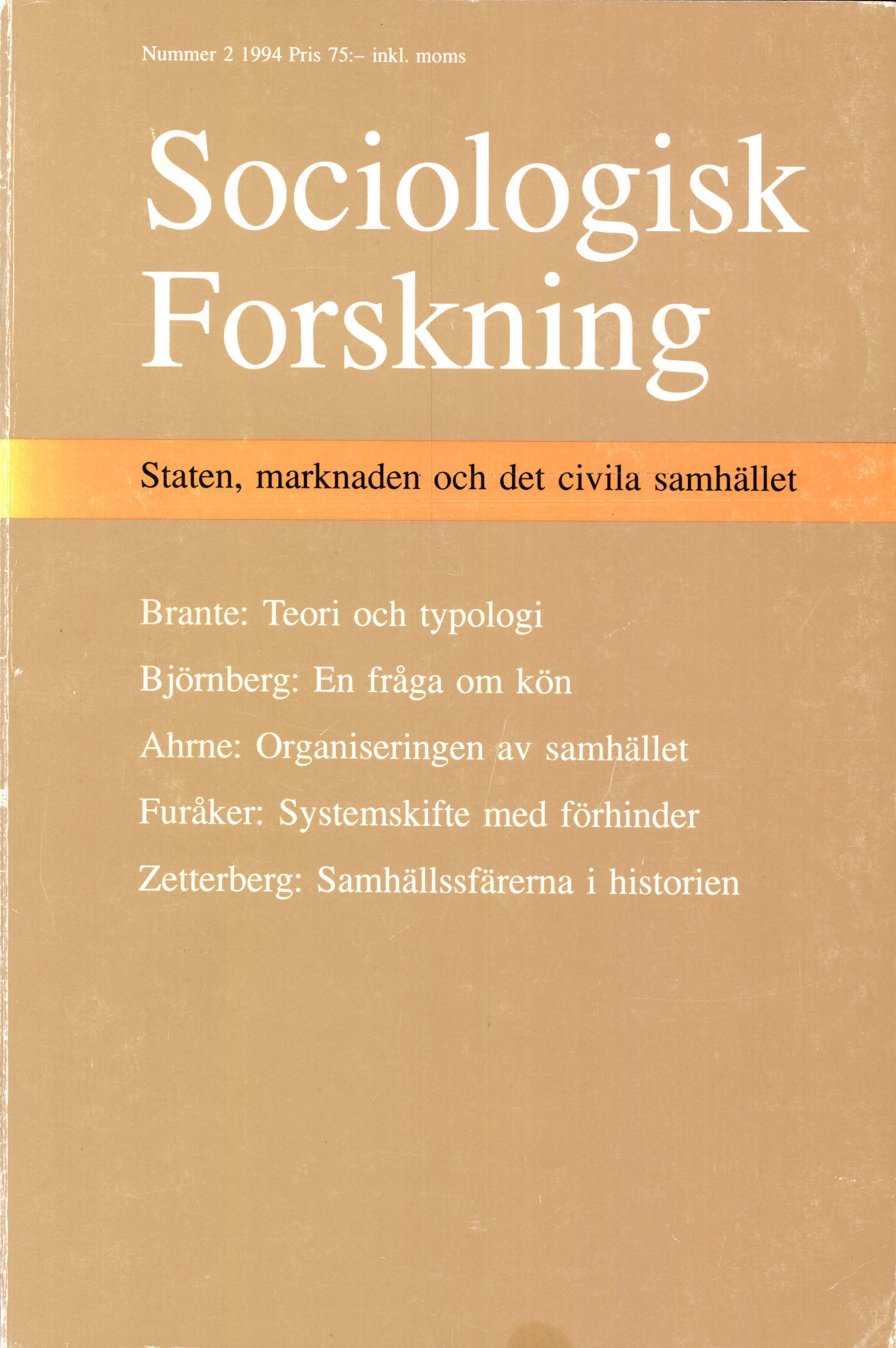Samhällssfärerna i historiens ljus
DOI:
https://doi.org/10.37062/sf.31.18613Abstract
Societal spheres in the light of history
A division of society into statecraft, economy, and civil society is found in Plato’s Republic. Its theoretical base is the differentiated and sometimes contradictory norms for these spheres. The mainstream of European structuration is traced from the ’two swords’ - state and church - that structured western European society in the Middle Ages to the six societal spheres (or cardinal institutions) of society - the economy, government, science, religion, ethics, and art - that are visible today. Each maintain a large measure of independence (Weber’s Eigengesetzlichkeit). Each is dependent on a special type of freedom: civic liberties, free trade, academic freedom, religious toleration, the right to follow one’s conscience, artistic license. The paper pauses in this differentiation process at special junctures: the English revolution, the emergence of the Latin American and North American societies, the evolution of modem society as an underpinning of democracy, the emergence of the European Union, and the post-Communist Central and Eastern Europe.
Downloads
Published
How to Cite
Issue
Section
License
All content in Sociologisk Forskning is published with immediate open access, under the Creative Commons license CC BY-NC-ND 4.0.
All content may be read, downloaded, shared and printed for non-commercial purposes, free and without fees. Contents may not be altered. When content is reused, author, source and a link to the copyright licence must be provided. The author retains copyright to their content. No publication fees are charged.





